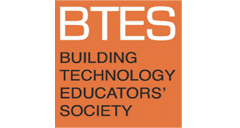Learning Via Making, a Hands-On Approach
Abstract
This paper showcases research and coursework conducted by the author in a higher education environment where hands-on approaches are used as the base for what is also known as experiential learning. The pedagogy is contextualized within the evolution of hands-on learning in academia, as well as the impact of new technology and advances in material sciences on learning through making. The goal is to understand how hands-on explorations in the use of concrete can constitute self-direct processes of conceptual and technical inquiry that can augment the students’ self-critique to determine next steps in the design process, while acquiring a comprehensive understanding of the building tectonics. Three methodologies are identified under experiential learning: design build, digital fabrication and scale prototyping. Through the use of course curriculum, the author presents case studies of each of these methodologies, as well as hybrid versions of their application. In all cases, knowledge production was advanced by making and testing as a framework for architectural discourse, enabling critical thinking in search of optimal solutions through hands-on explorations. Students gained new knowledge and skills by actively working on a specific problem or challenge while exploring broader and deeper realms of the course proposal through the prescribed material. When courses were combined with a project-based learning methodology, it enabled students to learn by actively engaging in real-word projects. Ultimately, knowledge production was advanced through engagement with industry leaders and demonstrated either in a design based on physical explorations and/or presentation of the proposal for a real client or audience. Making is a unique resource able to critically inform the design process and provide real-time feedback. Therefore, it is expected that hands-on courses will expose students to the exploration of materials within conceptual and technical frameworks to legitimate design decisions. The presented courses demonstrate that these pedagogical models ultimately nurture students with an assertive and solid foundation that can propel them as creative thinkers in the architectural field. However, more research needs to be conducted on understanding the learning curve of students that experience the hands-on methodology over other types of learning and their impact on their post-academic work.
Keywords: hands-on pedagogy, design-build, digital fabrication, scale prototyping, concrete
How to Cite:
Fernández, P. M., (2023) “Learning Via Making, a Hands-On Approach”, Building Technology Educators’ Society 2023(1). doi: https://doi.org/10.7275/btes.1926
Downloads:
Download PDF
786 Views
314 Downloads
